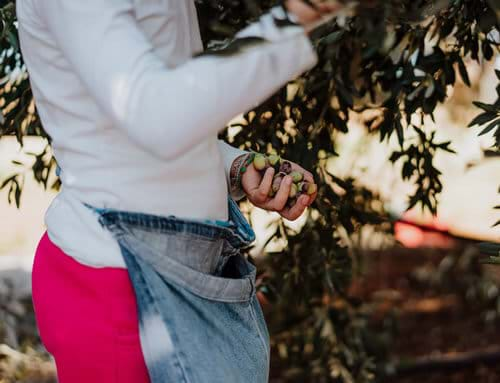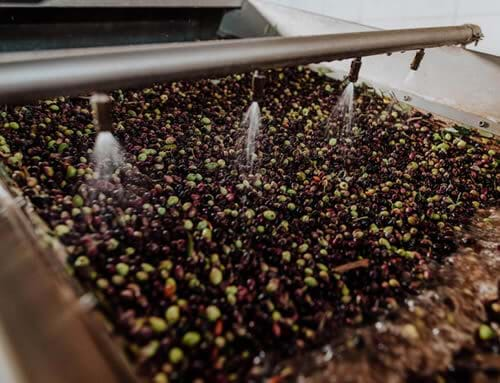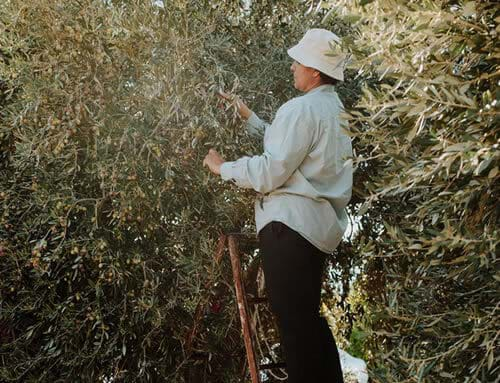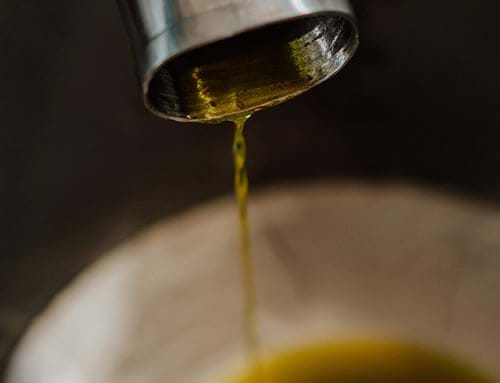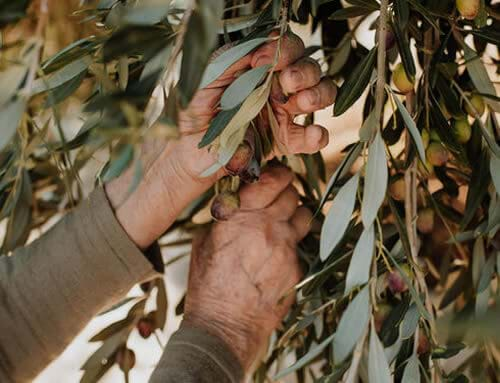From October to January is the season for harvesting olives in Cyprus. Growers will often make a first pass through the grove to cull the biggest olives; those that are turning black can be preserved with salt, while green olives are crushed, preserved with salt water, and later served with garlic, lemon juice, coriander, and olive oil as tsakistes. When it comes time to pick the remaining olives, a group of 3 or 4 pickers will spread a large tarp beneath each tree and use ladders to reach the highest branches. Olives are dropped to the tarp and later placed into crates using small handheld rakes. It can take a group an entire day to harvest one tree—so they come prepared with a picnic lunch! It might include black and green olives from the first pass along with bread, tomatoes, cucumbers, halloumi, mandarins, and Cyprus coffee. Each tree produces about ten crates of olives. These are loaded into a truck and hauled to the local olive mill. Using an automated system, the miller screens, washes, and rinses the olives to remove leaves and dirt before weighing. Then the olives go by conveyer belt to the mill, where they are ground to a paste and further processed to remove stones and impurities; the unwanted sediment is used as biofuel. Each grower’s olives are processed separately. The groups (often families) wait in anticipation for their jugs of olive oil—a staple of Cypriot cuisine they will use throughout the year.
